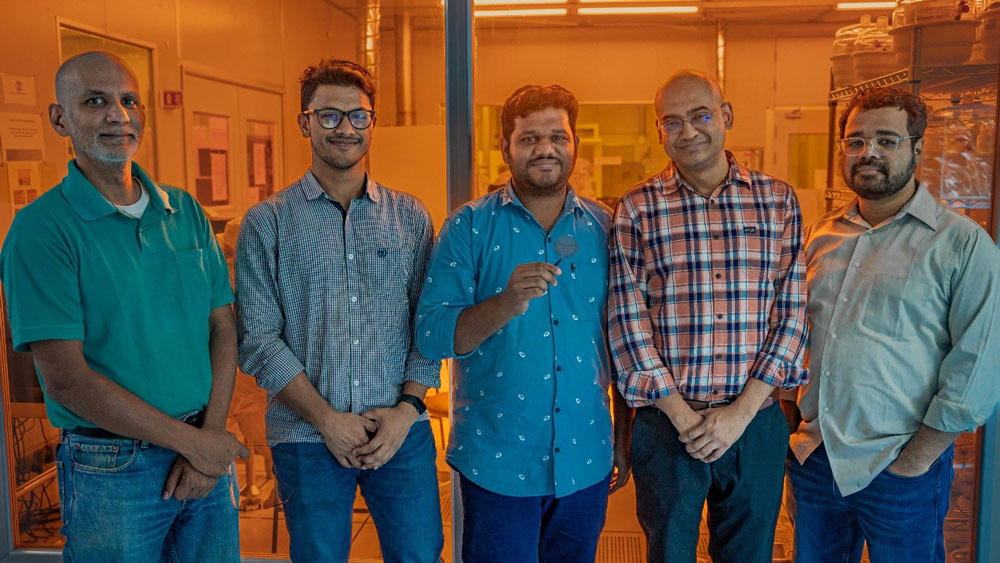News: Microelectronics
28 September 2023
Indian Institute of Science develops fully indigenous GaN power switch
The Indian Institute of Science (IISc) in Bengaluru has developed what it describes as a fully indigenous gallium nitride (GaN) power switch that can have potential applications in systems like power converters for electric vehicles and laptops, as well as in wireless communications (Baby R, Mandal M, Roy SK, Bardhan A, Muralidharan R, Basu K, Raghavan S, Nath DN, ‘8A, 200V normally-off cascode GaN-on-Si HEMT: From epitaxy to double pulse testing’, Microelectronic Engineering (2023)). The entire process of creating the switch – from material growth to device fabrication to packaging – was developed in-house at IISc’s Centre for Nano Science and Engineering (CeNSE).

Picture: Two-inch GaN-on-silicon wafer with power transistors, developed at IISc’s CeNSE (photo: Ashutosh Vishwakarma).
“The material and devices are heavily import-restricted… We don’t have gallium nitride wafer production capability at commercial scale in India yet,” notes CeNSE associate professor Digbijoy Nath, corresponding author of the paper. “The know-how of manufacturing these devices is also a heavily guarded secret, with few studies published on the details of the processes involved,” he adds.
To design the GaN power switch, the IISc team used a metal-organic chemical vapor deposition (MOCVD) technique developed and optimized over a decade by researchers in the lab of CeNSE professor Srinivasan Raghavan. The team was aided by Department of Electrical Engineering associate professor Kaushik Basu and his lab in fabricating an electrical circuit using these transistors and testing their switching performance.
GaN transistors typically operate in depletion mode – they are normally on unless a negative voltage is applied to turn them off. But power switches used in chargers and adapters need to work the other way around, in enhancement mode, i.e. normally off and not carrying current, and only turning on when a positive voltage is applied. To achieve this, the team combined the GaN transistor with a commercially available silicon transistor to keep the device normally off.

Picture: From left to right: Srinivasan Raghavan, Manish Mandal, Rijo Baby, Kaushik Basu, and Digbijoy N Nath (photo: Ashutosh Vishwakarma).
“The packaging of the device was also indigenously developed,” explains CeNSE PhD student Rijo Baby, first author of the paper. After packaging and testing, the team found that the device performance was comparable to state-of-the-art switches available commercially, with a switching time of about 50ns between on and off operation.
Going forward, the researchers plan to scale up the device dimensions so that it can operate at high currents. They also plan to design a power converter that can step up or step down voltages.
“If you look at strategic organizations in India, they have a hard time procuring GaN transistors… It is impossible to import them beyond a certain quantity or power/frequency rating,” notes Nath. “This is essentially a demonstration of indigenous GaN technology development.”
The work is funded by MeitY & DST Nano Mission through NNETRA, MoE (MHRD) through NIEIN, and SCL/ISRO.








